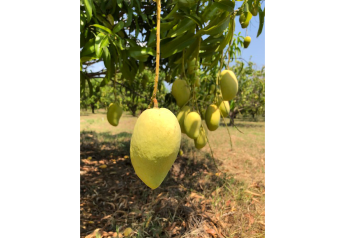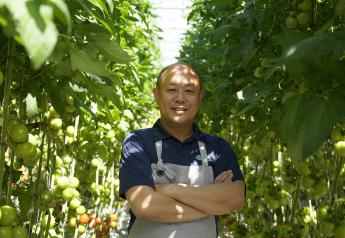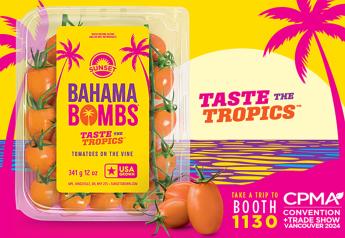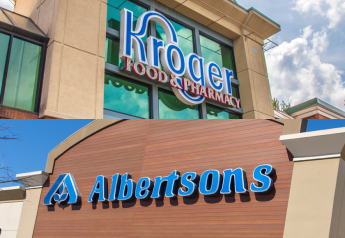PMA Virtual Town Hall looks at retail trends
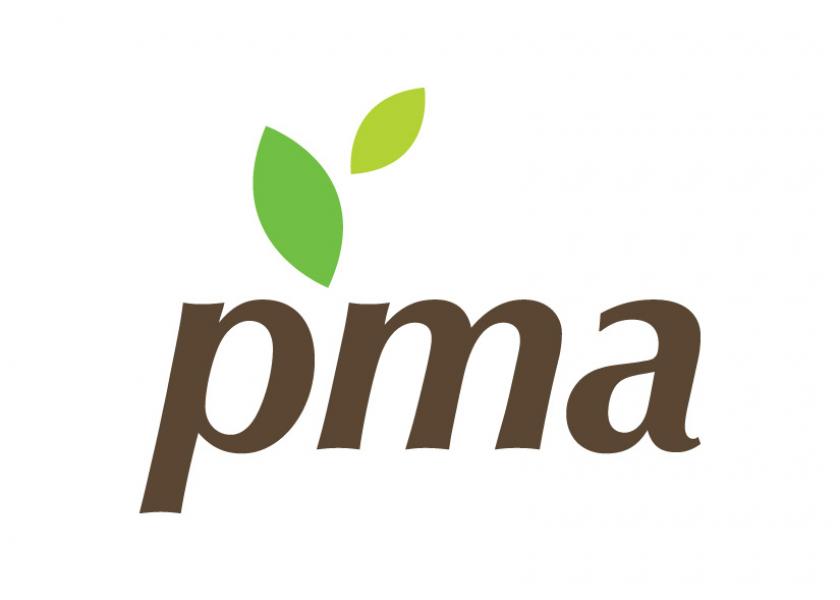
It has been a full year since the COVID-19 pandemic began and a May 5 Produce Marketing Association Town Hall program looked at some of the lessons learned.
Operators and suppliers must be ready to adjust to changing consumer behaviors and preferences, said panelist Jonna Parker, principal for the IRI Fresh Center of Excellence.
IRI partners with PMA for analysis of retail categories and sub-categories and also how consumers purchase fixed and random-weight commodities. In addition, IRI polls consumer sentiment about food and produce twice a year, she said.
Changed habits
The pandemic disrupted the dynamics of shopping, she said, with some categories gaining from new purchase visits and others growing because of bigger sales per visit.
All those nuances are significant to marketers and suppliers, Parker said.
“In order to know how to go forward, as we are starting to see more mobility in the marketplace, it’s going to be really critical for us to understand what happened in 2020 and really learn to capitalize on those levers,” she said.
During the pandemic, Parker said traditional grocery stores made up about 50% of the share of retail grocery sales, and that percentage climbed one or two points during the pandemic.
“That’s because when we couldn’t go to many stores anymore, we opted for the store that we knew the most,” she said.
The grocery store remains in a strong position this year, and supermarkets are focused on keeping new consumers in their stores.
Heath and specialty stores did not fare as well, as the pre-pandemic market share of that segment (including retailers like Whole Foods and Trader Joe’s) was about 6%. That dipped to 5% during the pandemic because of reduced shopper trips, Parker said. Traditional grocery stores gained some shoppers from health and specialty stores, as did club stores like Costco and Sam’s Club.
Club stores now have a grocery market share of about 12% and rising, about 2% better than pre-pandemic, she said.
“Consumers like to stock up now because they are at home and say the club store offers just what they need,” she said.
That makes club stores a formidable channel for the fresh produce industry to focus on, she said.
Like health and specialty stores, discount stores like Lidl and Aldi did not enjoy the same pandemic growth as traditional supermarkets or club stores.
“Don’t count them out yet,” Parker said. “From talking with those retailers, produce remains a major focus of their claw-back strategy in post-pandemic life.”
Parker said the shifting landscape doesn’t guarantee anyone success.
“No matter where you’re falling in the marketplace for selling your produce, consumer dynamics are telling us that each channel has opportunity but could also lose if it tries to market itself as it did in the pre-pandemic world.”

Consumer wants
The market penetration of produce commodities during the pandemic increased, Parker said, as more households consumed more food at home.
“Because of an influx of consumers cooking at home more did see many new households buying products they hadn’t bought previously,” she said.
Now there is a huge opportunity for specific commodities to keep those new buyers purchasing them even as the country returns to normal, Parker said.
Vegetables gained because shoppers increased trip frequency as they replicated their restaurant and foodservice meals at home.
“Consumers opted for fresh produce much more often than they did previously and that is a huge lever.”
Before the pandemic, households would consistently buy according to the same pattern, but the pandemic disrupted that, she said.
Tripping
Shoppers bought more produce per shopping trip. Even though prices were higher on some commodities, consumers also often bought much more quantity because they were going to stores less often.
For all of produce, she said about 79% of additional dollars during the pandemic came from more dollars spent per trip.
Sixteen percent of produce sales gains came because shoppers were buying produce more frequently, she said.
Because almost everyone buys produce, she said only about 5% of growth in produce sales came from brand new shoppers who had never bought fresh produce before.
Fruits versus vegetables
About 80% of the growth in fresh fruit sales came from more spending per trip.
A key strategy for retailers going forward is trying to increase the amount of produce purchased each trip.
“How do we get someone who came in to buy bananas to also buy oranges or apples or understand that there’s a lot of value-added produce available for them as well?” she said.
Several types of fruit gained from shoppers who had never bought that fruit before, she said.
Specifically, pineapple and some citrus varieties like tangerines found new shoppers. Berries saw 1 million new consumers in 2020 [AF1] because of COVID-19, Parker said.
“These are people who hadn’t bought previously and now put these fruits in their basket for the first time,” she said.
On the other hand, Parker said there were several commodity groups that lost buyers during the pandemic for a variety of reasons. That group included apples, grapes, pears and oranges.
Although oranges saw huge growth in terms of dollars during the pandemic, the number of shoppers picking them up declined, she said.
“Many of these categories like apples and oranges and grapefruit trend older,” she said. “As we age as a society, not gaining new buyers from younger households is going to be a critical issue for some of these groups.”
The frequency of shopping trips increased for pineapples, tangerines, berries and avocados, she said.
“That new behavior is a tremendous marketing opportunity,” Parker said, noting that consumers look at those fruits as snacks and useful for cooking at home.
Shoppers also used those fruits for smoothies and for breakfast, she said.
Creating incentive for those continued shopper behaviors will be key to continued growth, she said, as consumers go out more and start to work at offices more than homes.
For vegetables, Parker said about 60% of the growth came from increases in the dollars spent per trip. Those shoppers were buying greater quantities or spending more on the items they were buying.
“A lot of that growth came in categories like salad, where people were buying one, two, three, four packages at a time, and therefore they were spending more,” she said.
However, a substantial portion of added vegetables sales resulted from increased frequency of purchases.
“When consumers had to make more meals at home, fresh vegetables made it into the basket more often, and that meant more foot traffic for that department,” she said.
Vegetables are now an anchor for the trip to the grocery store, she said.
“That is a huge opportunity for us as marketers with fresh produce and fresh vegetables,” she said. “There are a lot of categories of fresh vegetables and so many of them saw new buyers in 2020.”
Fresh vegetable variety is the superpower of produce departments, she said.
Retailers said there are 2.5 million new buyers of spinach [AF2] and a similar amount for fresh mushrooms, she said.
“We saw people much more interested in them for cooking and for recipe inclusion,” she said.
While categories like fresh onions, carrots, celery and radishes grew overall in the pandemic, they did not gain buyers, Parker said.
“This is a concern for (those) commodities because consumers maybe that are younger or entering into the home for cooking aren’t seeing those as relevant,” she said. “And so, while your sales are still growing, the fact you’re losing buyers can be a bit of a concern.”
Boom or bust
Parker said that while upper-income consumers spend more per capita, it is important to value lower-middle-income consumers because they make up 60% of all sales of fresh produce in both fruits and vegetables.
“With the expansion of SNAP benefits, and other types of means to give incentives to consumers to buy fresh produce, it’s really important we also consider lower and middle income in especially certain commodities, because they will continue to be given incentives to buy those foods,” she said.
Household dynamics are also important to consider.
While families with kids certainly buy much produce, she said most households are one or two people. Those households can include millennials, Gen Z and retirees and later-in-life workers.
“I would argue almost too much of our sales today (come) from those older established workers who are in their 50s, but don’t have children at home, or retirees who are trending aged 65 and older,” Parker said.
“The fact that so much produce is still sold from these older demographics, and not so much the younger, is a concern that I have.”



